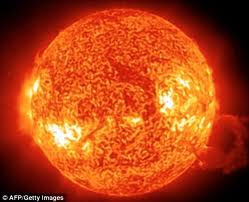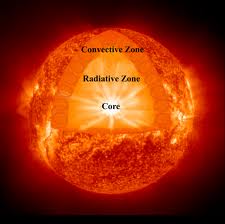Solar System
|
|
|
| Solar System | |||
| Stars | |||
| Planets | |||
| Terrestrials | |||
| Mercury-Venus | |||
| Earth-Mars | |||
| Gas giants | |||
| Jupiter-Saturn | |||
| Uranus-Neptune | |||
| Dwarf | |||
| Moons | |||
Stars |
||
| Star is a massive celestial sphere, not solid, mostly comprised of hydrogen and helium gas. A star is so massive that its core is dense and the high temperatures cause fast atom movements, collisions, new atom forming and great energy releasing. This process is called nuclear fusion. The released energy makes the star to shine and give light and its heat affects the surrounding celestial objects. The star's internal gravity prevents it from further collapsing. It is stable and motionless into the galaxy. Stars are the ones being visible during the night although being extremely far. |
 | |
| The star giving light and life to Earth is the Sun. | ||
The Sun |
||
| The star closer to Earth is the Sun. Sun is very big; if it was a hollow ball more than a million Earths could stuff inside.
And it is very hot, about 5.500 Celsius degrees on the surface and 15.5 million Celsius degrees at its core. |
 |
|
| Its rotation/solar day last as 25 earthly days.
It seems having almost same size with the Moon only because the Sun is very far where the Moon is very close to Earth. |
||
Activity |

|
Choose the correct:
<< Back | Forward >>